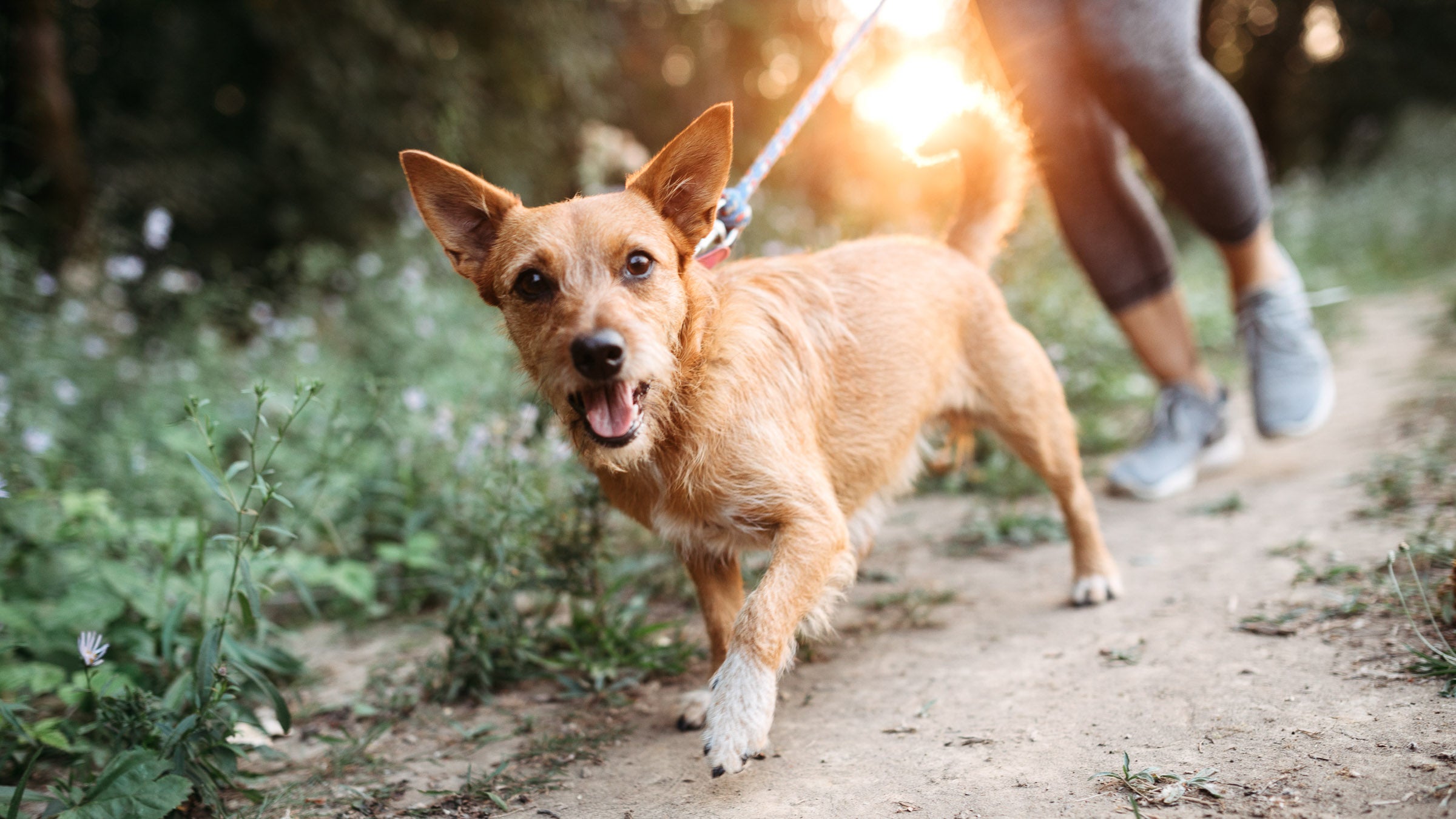5 Tips to Make Your Dog a Great Running Companion

(Photo: Getty Images)
The dog days of summer are here, and if you want your dog to be your running companion, there are some safety tips to keep in mind. Empower your pup partner with five dog-friendly running tips from Dr. Steve Marks, Associate Dean and Director of Veterinary Medical Services at North Carolina State University College of Veterinary Medicine, and see if your dog’s breed makes it a good natural fit to run with, below.
5 Tips for Running with Your Dog
1. Ease In
“Some dogs are just not going to be good runners unless you really start out slow, like hiking and long walks,” says Dr. Marks. Just like you wouldn’t expect your friend who doesn’t run to join you for 6 miles right out the gate, your dog won’t be ready right away either. Consider starting a Couch to 5K program with them.
2. Plan Your Route
Try not to stray too far from home before you know how your dog will react to their new routine. Make sure your route is safe for you and your pet. And if you don’t want to carry water with you, scope out nearby water fountains as well as cafes and businesses that leave water dishes outside.
3. Watch the Weather
Dogs aren’t able to tell you if the weather doesn’t feel right to them. Dr. Marks’ rule of thumb? “If it’s intolerable to you, it’s probably intolerable to [them].” Also consider the ground conditions: Keep their paws off hot, black pavement on summer days and away from damaging rock salt on icy days.
4. Know Your Dog
Information is power. How does your dog react to other dogs? What about cars passing by? How are they on leash? Are they so eager to please that they won’t stop even if they’re tired? Knowing the answer to these questions will help keep you and your pet running safely and your dog eager to continue being your run companion.
5. Consider the Extremes
If your pooch is older, or has a bone, neurologic, or heart disease, it’s best to consult with your vet. Same goes for dogs that are young (the canine skeletal system doesn’t fully develop until about two years). “These are not prohibitive,” says Dr. Marks. “It just means you want to use some caution.”
Running with Different Breeds
Depending on their breed, temperament, and size, the amount of exercise a dog needs in a day varies. Keep your companion entertained by switching up their exercise with running, walking, playing fetch, agility courses, or teaching them a new trick. The following averages are for adult dogs with moderate temperaments based on Rover’s Daily Exercise Calculator.
 Sporting Group
Sporting Group
Originally bred to aid hunters, this group includes spaniels, pointers, retrievers, and setters.
Exercise: 70-135 minutes per day
 Toy Group
Toy Group
Known for their small size, this group includes Chihuahuas, Maltese, Pomeranians, and more. These dogs may be capable of running, but don’t expect them to keep up to your pace.
Exercise: 30-60 minutes per day
 Working Group
Working Group
These dogs were bred with a job in mind (pulling sleds, guarding, rescuing), like Bernese Mountain Dogs, Great Danes, or Mastiffs.
Exercise: 70-135 minutes per day
 Herding Group
Herding Group
A branch off of the working group, herders were bred to manage livestock. Collies, cattle dogs, and shepherds are the main dog breeds here.
Exercise: 65-130 minutes per day
 Terrier Group
Terrier Group
Terriers are known to be protective, stubborn, and energetic. They were originally bred to guard homes.
Exercise: 50-95 minutes per day
 Hound Group
Hound Group
Similar to the sporting group, hounds were bred to help hunters and are known for their incredible sense of smell and tracking abilities.
Exercise: 70-135 minutes per day